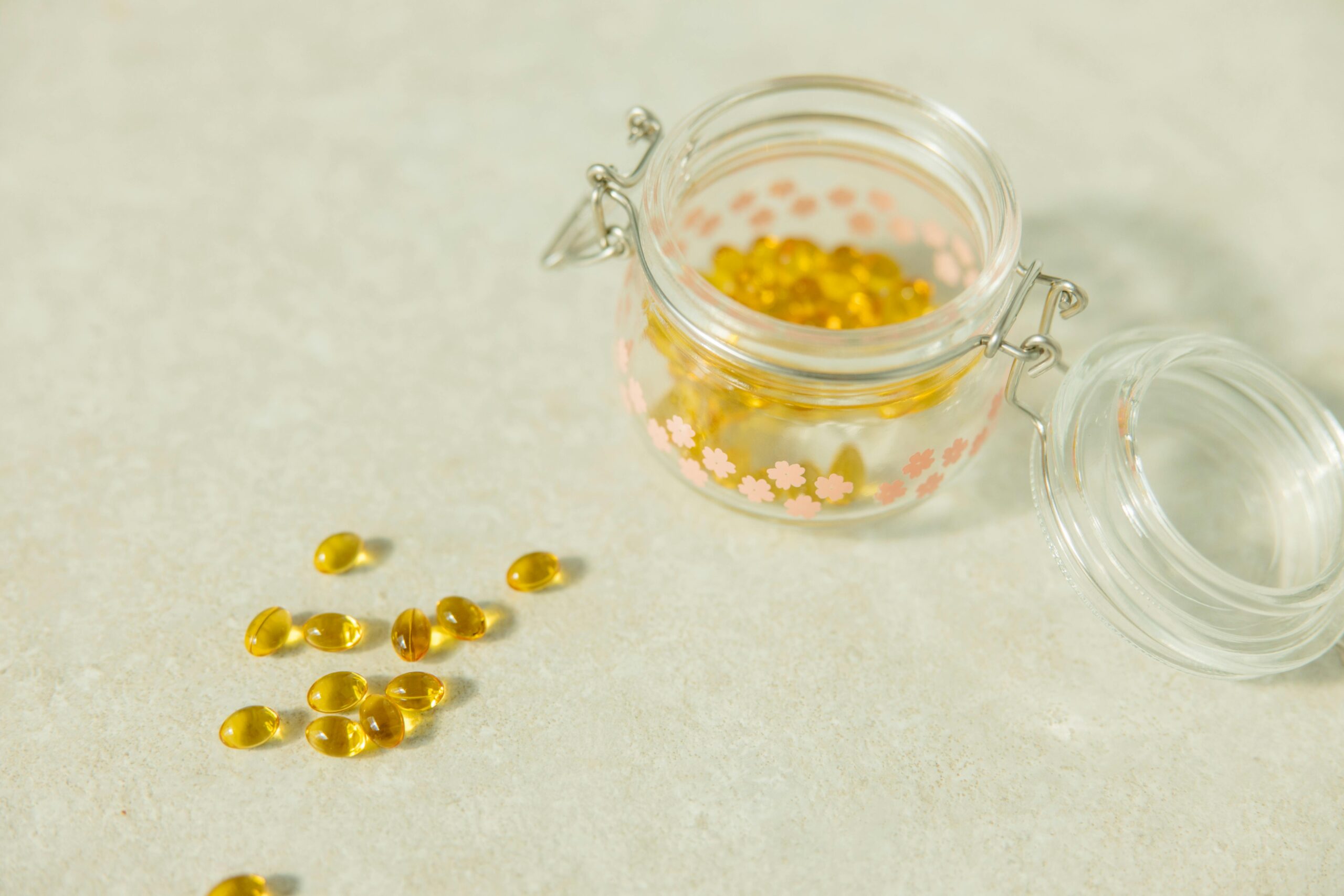Why the Omega-3 EPA DHA Ratio Matters More Than Most People Realize
Most people start omega-3 supplements by checking the label for the usual basics: total EPA, total DHA, whether it’s from fish oil or algae, and maybe whether it’s rTG or ethyl ester.
But very few realize that the ratio between EPA and DHA—how much of each fatty acid you are actually consuming—can dramatically shift the results.
When researchers began comparing different formulas, they found that your body responds differently depending on which fatty acid dominates.
Inflammation, mood, triglycerides, cognitive performance, eye function—each of these leans on a specific biochemical pathway. EPA and DHA aren’t interchangeable; they complement each other but push the body in distinct directions.
So if you’ve ever wondered why some formulas feel noticeably different even though the total “omega-3 mg” is the same, the answer is almost always the EPA:DHA ratio.
What EPA and DHA Actually Do in the Body
EPA (eicosapentaenoic acid) and DHA (docosahexaenoic acid) belong to the same omega-3 family but act like two specialists:
- EPA → stronger for inflammation modulation, cardiovascular health, triglyceride reduction
- DHA → crucial for brain function, memory, cell membrane stability, visual development
- Both → cardiovascular support, anti-inflammatory effects, cellular protection
This is why the optimal ratio feels so individualized.
Someone dealing with high triglycerides needs a very different formula than someone trying to improve focus or memory. The ratio is the real “fine-tuning knob” for omega-3 benefits.

What the Latest Research Says About EPA-Dominant vs DHA-Dominant Formulas
Large clinical trials have made things clearer in the past few years. Let’s look at the evidence.
🔹 EPA-Dominant Formulas
Studies such as the REDUCE-IT trial showed that high-dose, purified EPA (4 g/day) lowered major cardiovascular events by 25%—a massive effect compared to mixed formulas.
PubMed: https://pubmed.ncbi.nlm.nih.gov/30415628/
This is one of the most powerful omega-3 studies to date and demonstrates that EPA, when taken in a high enough dose, has potent anti-inflammatory and lipid-lowering ability.
The American Heart Association also notes that EPA appears to reduce triglycerides more effectively than DHA.
AHA: https://www.ahajournals.org/doi/10.1161/CIR.0000000000000564
🔹 DHA-Dominant Formulas
DHA is structurally embedded in the brain and retina. Approximately:
- 40% of brain membrane fatty acids
- 50–60% of retinal fatty acids
come from DHA, according to NIH fact sheets.
NIH: https://ods.od.nih.gov/factsheets/Omega3FattyAcids-Consumer/
A 2017 study also found DHA improved memory and learning more significantly than EPA in healthy young adults.
PubMed: https://pubmed.ncbi.nlm.nih.gov/29122268/
🔹 WHO Guidance on DHA for Pregnancy
The WHO recommends DHA supplementation during pregnancy for fetal brain and retinal development.
WHO: https://www.who.int/publications/i/item/9789241546126
The Best EPA:DHA Ratio Based on Your Health Goal
Below is the science-based breakdown, combining major trials, meta-analyses, and guidelines from NIH, WHO, and major heart associations.
✔ 1. For Heart Health, Triglycerides, or Systemic Inflammation → EPA-dominant (2:1 or higher)
EPA works better for:
- lowering triglycerides
- reducing inflammatory cytokines
- improving vascular function
- lowering cardiovascular risk
Most high-performance cardiovascular formulas use EPA-dominant blends such as 600 EPA : 300 DHA or even formulas closer to pure EPA.
✔ 2. For Brain Health, Memory, Learning, or Focus → DHA-dominant (1:2 or higher)
DHA is essential for:
- synaptic function
- cognitive speed
- memory retention
- visual processing
For brain support, DHA should be at least 500–1000 mg/day and should exceed EPA.
✔ 3. For Eye Health or During Pregnancy → High-DHA (1:2 or DHA-only)
Pregnancy, breastfeeding, and early childhood development depend heavily on DHA.
Eye health (especially dry eye and visual fatigue) also responds better to DHA-rich formulas.
✔ 4. For Joint Health or Chronic Low-Grade Inflammation → EPA slightly higher (1.5:1 ~ 2:1)
EPA has stronger inflammation-modulating properties, but DHA helps stabilize cell membranes, so a modestly EPA-leaning blend is typically best.
✔ 5. For General Health, Without a Specific Condition → Balanced 1:1
This is the safest all-purpose ratio and explains why many quality consumer omega-3s follow this structure:
- supports the heart
- supports cognition
- supports inflammation control
- supports vision
A true “everyday maintenance” ratio.
Signs You May Have Low Omega-3 Levels
Omega-3 deficiency is surprisingly common. People who rarely eat fatty fish tend to show signs like:
- poor concentration
- chronic fatigue or low mood
- dry skin
- high triglycerides
- slow recovery from exercise
- more noticeable inflammation or joint discomfort
- visual strain
EPA deficiency tends to appear more through inflammation; DHA deficiency appears more through cognitive or visual symptoms.
Recommended Daily Intake (Science-Based)
Here’s what major health organizations generally agree on:
- General adults: 500–1000 mg EPA+DHA per day
- For high triglycerides: 2000–4000 mg/day
- Pregnancy: at least 300–600 mg DHA
- Brain health focus: 600–1000 mg DHA
- Heart health: EPA-dominant formulas recommended
These levels align with AHA, EFSA, and NIH consensus ranges.
Side Effects and Safety Considerations
Omega-3 is safe for most adults, but higher doses require more attention.
Possible side effects:
- mild digestive discomfort
- fishy burps
- looser stools at high doses
- slight increase in bleeding tendency
The FDA notes that doses above 3 g/day should be supervised medically.
Interactions with Medications
Be cautious if you take:
- anticoagulants (warfarin, heparin)
- antiplatelet drugs (aspirin, clopidogrel)
- high-dose antihypertensives
Omega-3 can enhance the blood-thinning effect.
How to Actually Read an Omega-3 Supplement Label (Only 3 Things Matter)
When evaluating a supplement:
- EPA + DHA total mg → aim for at least 1000 mg
- EPA:DHA ratio → match it to your health goal
- Form type → rTG generally absorbs best, but EE/TG are also fine
This simple checklist filters out 90% of low-quality products.
The Realistic Limitations of the Research (Honest Summary)
Even though the science is strong, no field is perfect. Major limitations include:
- inconsistent dosing across studies
- differences between purified EPA vs mixed oils
- variations in baseline omega-3 levels
- limited long-term DHA-dominant trials compared to EPA trials
Still, the overall direction of evidence is remarkably consistent.
Final Verdict: What’s the “Best” EPA:DHA Ratio?
There is no single universal ratio—but there is a best ratio for each purpose:
- Heart health / triglycerides / inflammation → EPA-dominant 2:1
- Brain / memory / focus / eyes → DHA-dominant 1:2
- Pregnancy → high-DHA
- Joint health → EPA > DHA
- General health → 1:1 balanced
- Severe cardiovascular risk → consider EPA-only (under medical guidance)
If you remember nothing else, remember this:
👉 EPA calms inflammation.
DHA powers the brain.
Your ratio should match your goal.
Frequently Asked Questions (FAQ)
1) Is EPA better for mood?
Some studies show EPA-dominant formulas may help reduce depressive symptoms, especially when EPA exceeds 60% of the blend.
2) Is DHA enough for brain health on its own?
For cognitive function, DHA is the primary driver. EPA can help but isn’t essential.
3) Is rTG the only “good” form?
rTG absorbs better, but EE and TG forms can still be effective when taken with meals.
4) Can I get enough from food alone?
Only if you regularly consume fatty fish (salmon, sardines, mackerel) 3–4 times weekly.
5) Should I switch ratios over time?
No. Stick to the ratio that matches your primary health goal for consistency.
📌 External Research Links (included in the article)
- REDUCE-IT (pure EPA trial): https://pubmed.ncbi.nlm.nih.gov/30415628/
- NIH Omega-3 Fact Sheet: https://ods.od.nih.gov/factsheets/Omega3FattyAcids-Consumer/
- AHA Review: https://www.ahajournals.org/doi/10.1161/CIR.0000000000000564
- WHO DHA Guidelines: https://www.who.int/publications/i/item/9789241546126

